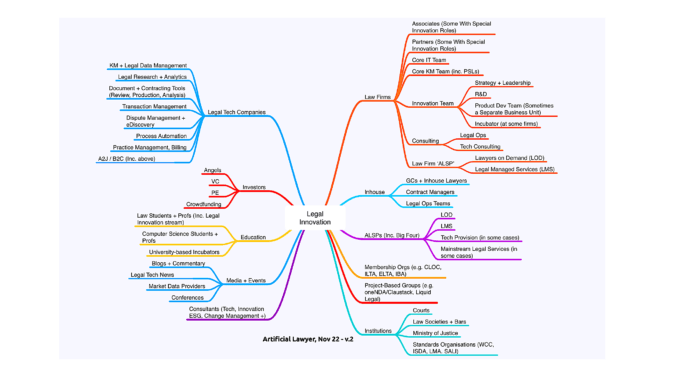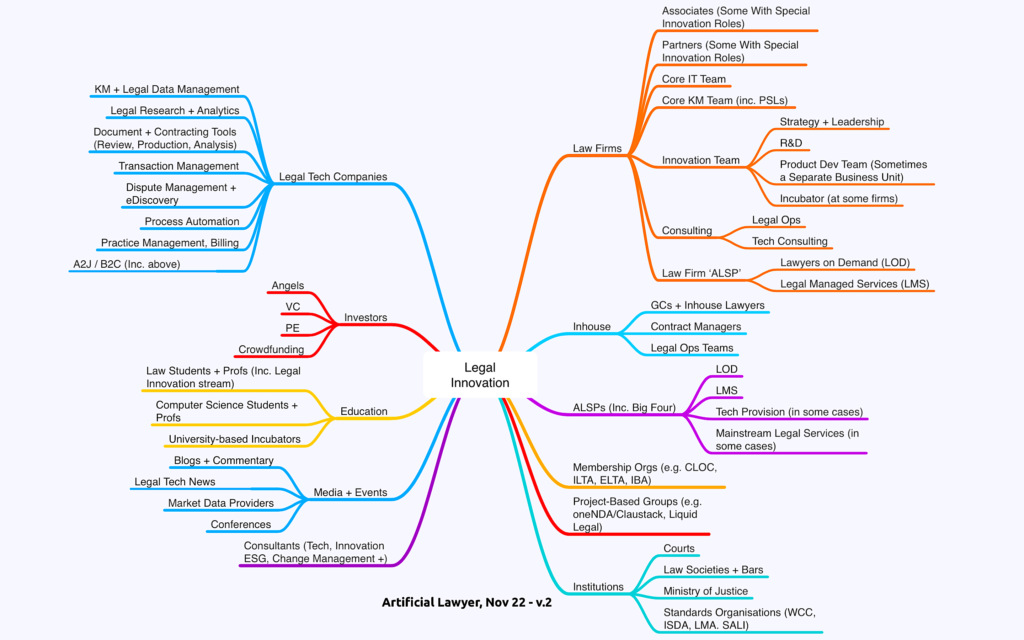
Why do things evolve? There are two main reasons. One: the environment changes in ways that allow only those that can adapt to prosper and suppresses those that don’t. And two: participants in the ecosystem change on their own, affording them advantages within their environmental niche.
In short, and in terms of organisations in the market, it’s the ‘stick and the carrot’. The ‘stick’ is where the environment changes against the businesses there that have previously adapted to the old status quo. If they want to retain their hold on their niche they have to adapt.
Luckily for humans, we don’t have to wait for our physical DNA to mutate to adapt to something. We can analyse the situation, collect evidence and then imagine a better way of doing things (i.e. innovate).
Then we can test that idea (the hypothesis), build tools to help and new ways of working and deploying our group’s talent, and try to overcome the challenge. If we succeed we secure our place in the niche. If we fail, we have wasted resources and perhaps have allowed rivals in the niche to take our place. But, if we don’t try to innovate then we are almost certainly going to be out-adapted by rivals in the same environment.
Then there is the ‘carrot’. Again, in nature, DNA mutates each generation. In most cases we don’t notice. But sometimes – and across large expanses of time – those mutations are truly positive and allow a species to take advantage of its environment, or expand its environment, in new ways, allowing it to grow as a group, avoid competition, and reach new resources. An example is the development of the ability to fly among reptiles.
For humans, as noted, we can go the innovation route if we want to benefit positively from this scenario, often by choice and for our own advantage. And one could argue the history of civilisation has been largely steered by opportunistic steps forward in innovation. No-one held the citizens of Manchester and the West Midlands in the UK at gun-point, demanding they create the Industrial Revolution – certain people saw what could be done through innovation and they did what was possible with the technology and processes of the time. It changed the world.
Environmental Change in the Legal World
For Artificial Lawyer it looks like we are now facing a period of rapidly increasing change in the legal market, driven by both environmental factors that many of the participants can do nothing about other than to 1) try to resist, or 2) adapt to and prosper from; as well as increasing opportunities for ‘positive evolution’ created from opportunistic developments. So, what’s changing? Here are some thoughts, but first a map of the Legal Innovation Ecosystem, which has been updated to include more aspects.

The map is here because that is where most of us are situated, and as is often the case in an ecosystem when one part of the system changes then the effects are felt in many other branches of this ‘meta-entity’.
A Root Cause: Client Change
Ever since the first panel was created, inhouse legal teams have very slowly, very incrementally, been thinking more and more about how they procure legal services. In turn the legal operations movement has seen those same teams consider how things operate internally. Meanwhile, and especially since the last financial crisis in 2008/9 the CFOs of larger companies have been looking at legal spend and asking a simple, but powerful two-part question: ‘Why do we spend this much on legal needs? And is there anything that can be done to improve things while still providing the same level of protection?’
Another factor has been the advance of technology. For example, CLM systems are not new, but in the last few years they have arguably got a lot better, primarily because of improvements in software. For example, the provision of Natural Language Processing (NLP) capabilities to extract key data from both new and old contracts has helped companies to have better data visibility without having to rely upon thousands of people in a Legal Process Outsourcing (LPO) type of facility that is joined to the CLM provider. Add to this faster and smarter approaches to workflows and doc automation, as well as building better-connected platforms that ferry information and documents back and forth across the legal team and to the business as a whole, and inhouse teams have been able to leverage tech to gain plenty of benefits.
But, the adoption of tech is not in itself the most profound change. What really matters is that as inhouse legal teams – with the encouragement of other parts of the business – rethink how legal work is handled, from triaging work streams to considering who should do what work and how, then the traditional relationships with external suppliers and internal clients evolve.
If you have more awareness of what you do, what it costs, how it helps or hinders your efforts to do higher value work, and that there is now real engagement from the rest of the business to have those insights and improvements, then inhouse legal teams will change – and are changing, albeit at present still incrementally. However, once new norms of behaviour are established then change will accelerate. Then, upon those new norms will come further change and improvement, as the GCs and other senior inhouse lawyers, heads of contract management, as well as CFOs, gain a new appreciation of what can be done.
For law firms, the clients are in effect the ‘land that they live upon’. If this environment changes then everything changes. So, what changes?
- Clients really start to expand their use of ALSPs, whether dedicated entities, or part of a law firm or Big Four firm, not just for long-established needs such as eDiscovery work, but for everything that can be determined to not be high risk or ‘cost irrelevant’, and so service delivery can be significantly improved.
- Clients expect smoother service and longer-term relationships with providers. Where before ‘value add’ meant seconding a junior associate to a client as a kind of ‘free gift’ to keep the client sweet and loyal, things now are much more sophisticated. Clients will be expecting a suite of useful digital tools from providers. They will expect things like tech-based deal management support and on-demand knowledge services e.g. expert systems, or perhaps an entire contract management system, whether built by the firm or provided by the firm via a third party.
- This will often be in tandem with consulting services, from legal ops to legal tech to special project management. Just expecting external providers to offer high risk, high value advice will become less and less common.
- As some law firms pull ahead here others will be forced to adapt to keep up. Or perhaps give up on certain types of work. There will also be opportunities for some firms to rise in the ranks by providing the right mix of advice and process help. The market could well change plenty in the coming years because of this environmental shift.
However, there are some who may not change much – and will still prosper for now – and that in turn will reshape the market. Some US law firms, especially those working on ‘price-irrelevant’ matters, e.g. for very large private equity funds, and where the associate hours and overall business model has been skewed to maximise profits at all human costs, are now breaking away from the rest of the market in terms of profits. They have doubled down on the ‘traditional’ super-inefficiency model and surprisingly many of their clients don’t seem to care a jot about all the wasted money. This group, often associated with the New York legal market, may of course find they are left ‘high and dry’ one day in the future if their ‘cost-blind’ clients have a change of heart. But, it could go on like this for a long time.
We are already seeing now a split in the ‘elite’ firm group, with the older model plus profligate clients, creating stratospheric partner profits – but only for a very small group of firms. Everyone else is having to adapt.
The Future Direction
This could probably turn into a book, and we don’t have the time or space right now, but the key point here is that as the clients change so does everything else.
If the clients change then the law firms have to change. ALSPs see new niches in the environment open up and expand. The use of tech increases and opportunities for new tech solutions expands as well. The rethinking of processes accelerates. New approaches to staffing also arrive, or expand if already here.
In turn, legal education needs to change and so too the variety of jobs widens in this field. Organisations spring up and expand to support this change. And so on. Every branch of the ecosystem tree feels the effects.
As noted, this has not happened overnight. We can trace the first changes back to the earliest efforts to create panels, followed by what was called back then ‘the New Normal’, referring to GCs having to really explain why they did what they did to their CEOs and CFOs. Then we had the legal ops movement, the ‘New Wave’ of legal tech since 2015, the much greater expansion of ALSPs and the Big Four, and generally a widening of knowledge and education around legal data and the economics of legal processes, to now a push to drive a more human-centric approach to the legal world, which embodies all of the above.
All in all, this amounts to environmental change, and that in turn will super-charge the legal innovation ecosystem, and in turn the legal market as a whole.
There is so much more to be said here, but it’s been a fantastic experience and a privilege for Artificial Lawyer to have been a part of the journey up to this point. Moreover, this site would estimate that we are really now only just beginning what will be a much more rapid era of evolution in this market. Exciting times ahead!
Richard Tromans, Founder, Artificial Lawyer, Nov 2022